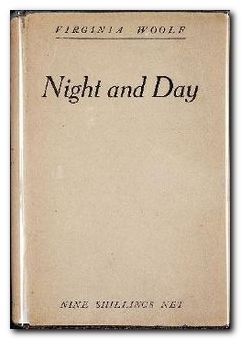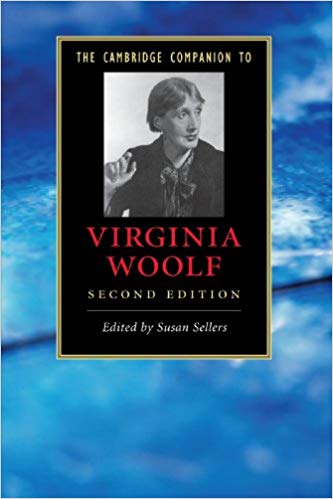tutorial, commentary, study resources, plot. web links
Night and Day was Virginia Woolf’s second full-length novel. It was first published by Duckworth and Company in October 1919. (This was the publishing company owned by Woolf’s step-brother Gerald Duckworth.) An American edition appeared under the imprint of George H. Doran in 1920
first edition – Duckworth 1919
Night and Day – critical commentary
The main theme
Virginia Woolf had been writing about the plight of the young unmarried middle-class woman since her earliest works such as the short story Phyllis and Rosamund (1906). She continued to develop her observations and criticisms about women’s education and their role in society in her non-fiction polemic A Room of One’s Own (1929) and these ideas were further developed into her wholesale attack on the patriarchal nature of British society in Three Guineas (1938).
Katharine Hilbery has not been educated or trained to do anything useful except live at home with her parents. She feels oppressed by the family and its illustrious history, and her only possibility of change is the option of marriage, which is why she initially feels doomed to accept William Rodney’s offer when it comes along.
Katherine is very conscious of being cut off from the world of work – and she actively wishes she had a job. She sees this as an antidote to the somewhat pointless life she leads as an unmarried young woman living at home where she ‘helps’ her mother in the vanity project of writing her grandfather’s biography.
Work
The novel makes a strong critique of the emptiness of a young unmarried woman’s life, and contrasts this with the apparent satisfaction of being engaged in purposeful work.
The suffragist Mary Datchet is very conscious of her own independence, and proud of the fact that she has a ‘room of her own’ and works in an office for a cause in which she believes. However, she does not get paid for the work she does, and it is no surprise to eventually find that she is the daughter of a clergyman, and is thus being kept economically by her family. She is engaged in voluntary charity work, not paid employment; and she is not truly self-sufficient.
Woolf appears to have slightly romantic ideas about the nature and conditions of paid employment. Mary doesn’t start work until 10.00 am; she has expensive lunches; and she lives in central London in rooms which are spacious enough to host meetings – none of which she would be able to afford without the financial backing of her family.
Ralph Denham also doesn’t start work until 10.00 am, and seems to have endless amounts of free time for extended walks through London, for afternoon teas, and for visiting people in what would normally be working hours. He arranges to meet Katharine Hilbery for a serious discussion about his future in Kew Gardens – at three o’clock in the afternoon.
Ralph is bored by his own work as a solicitor’s clerk, and has romantic aspirations to be a journalist – having published a review in Mr Hilbery’s Critical Review. Woolf appears to be uncertain about his exact status: sometimes he claims to be a ‘solicitor’ but on other occasions he is described as a ‘solicitor’s clerk’. There is a big difference between the two.
William Rodney is supposed to be a government clerk – yet he has enough money to live in style; he owns a piano and collects expensive rare editions; and the Hilbery family think he is an acceptable match for Katharine. He too is free to attend a tea party in Cheyne Walk at half-past four in the afternoon
It’s as if Woolf didn’t want to populate her novel entirely with upper middle class people who lived off private incomes and investments, but could hardly conceptualise the lives of real working people. The result is that the three characters of Ralph Denham, William Rodney, and Mary Datchet are cyphers for working people, and are less convincing fictional characters as a result.
The text is modernist in that it reflects the technology of twentieth century life. People make telephone calls from their own homes (requesting a number from an operator) they take rides in cabs, the underground, and the omnibus (not yet abbreviated to ‘bus’) – yet it has to be said that the historical setting remains slightly vague. The only certainty is that the events pre-date 1914.
Weaknesses
The romantic oscillations and changes of mind between the four principal characters are dragged out to inordinate length. The indecisions and reversals of feelings might accurately reflect uncertainty in people’s feelings and their choices of romantic attachment, but something like twenty chapters of will-she, won’t-she (and will-he won’t-he) plus rather amateurishly orchestrated coincidental meetings put a great strain on the reader’s patience.
This element of the novel reaches almost farcical proportions in the passages dealing with William, Katherine, and Cassandra. For instance when William begs Katherine to return to their former engagement she tells him that Cassandra loves him more, at which he immediately reverses his choice and is united with Cassandra, who has been listening to the conversation in concealment – all within the space of a few short paragraphs. This is the material of a Brian Rix Whitehall farce. The novel becomes more like a radio or television soap opera than a carefully constructed novel.
If weakness can have a climax, the novel reaches one in its final chapters when the two male suitors are (quite reasonably) banned from the house by Mr Hilbery. But they are then forgiven and reinstated the following day, with no explanation given. Everyone is happy, as in a children’s story, and the serious social issues raised by the Ralph Denham—Katharine Hilbery match simply dissolve in a vaporous and false ‘resolution’.
It has been emphasised throughout the novel that Ralph Denham has no money, and is responsible for supporting the remainder of his family. It stretches credulity and the conventions of the realist novel that a family such as the Hilberys would permit their daughter to marry with so few prospects of being decently kept.
Moreover, Denham’s own prospects are also not resolved in any detail. He has been dissatisfied with his (ill-defined) work throughout the novel, occasionally nursing a fantasy of living in a cottage and writing a book, but this comes to nothing – so he is no further forward at the end of events than he was at their beginning.
Woolf also seems to forget that she endows him with the dubious habit of gambling with his scant savings on the Stock Exchange at the start of the novel – but this is never mentioned again after the first chapters. He neither loses money, nor pulls off a profitable investment. The issue is simply forgotten.
There are too many named but inconsequential characters cluttering the text. For instance, Mary Datchet’s brothers and sisters are introduced – Elizabeth, her older sister, her brother Edward who is an estate agent, and Christopher who is a law student. This might establish the social status of the children of a provincial rector, but they serve no purpose in the novel whatever, since they never reappear.
Denham’s college friend Harry Sandys is introduced in the middle of the novel, and is never mentioned again. The family relative Cyril Alardyce is living with a woman to whom he is not married, and much is made of the issue, but it is not related to the main events of the novel in any meaningful way, and once a visit of concern has been made, the topic disappears, never to be mentioned again.
Katharine’s interest in mathematics is established as her individualist reaction to the weight of social convention that she finds so oppressive. She is expected to pour tea and make polite conversation with visitors but (we are expected to believe) she has a private passion which provides a separate life outside this public realm, located in the abstract realm of numerical calculations. The problem is that this private passion is never dramatised or expressed in any way. Indeed, it is simply not mentioned again after its first appearance in the text.
These weaknesses are what would normally be described as ‘loose ends’ – that is, issues which are not successfully integrated or resolved in the overall scheme of the novel. But there are simply too many of them, and these weaknesses, coupled with the poorly executed finale to the main drama, suggest a novel which has simply not been carefully conceived or written.
Night and Day – study resources
![]() Night and Day – Oxford World Classics – Amazon UK
Night and Day – Oxford World Classics – Amazon UK
![]() Night and Day – Oxford World Classics – Amazon US
Night and Day – Oxford World Classics – Amazon US
![]() Night and Day – Wordsworth Classics – Amazon UK
Night and Day – Wordsworth Classics – Amazon UK
![]() Night and Day – Wordsworth Classics – Amazon US
Night and Day – Wordsworth Classics – Amazon US
![]() Night and Day – eBook formats at Project Gutenberg
Night and Day – eBook formats at Project Gutenberg
![]() The Complete Works of Virginia Woolf – Kindle edition – Amazon UK
The Complete Works of Virginia Woolf – Kindle edition – Amazon UK
![]() Night and Day – Vintage Classics – Amazon UK
Night and Day – Vintage Classics – Amazon UK
![]() Night and Day – Vintage Classics – Amazon US
Night and Day – Vintage Classics – Amazon US
![]() Virginia Woolf – biographical notes
Virginia Woolf – biographical notes
![]() The Cambridge Introduction to Virginia Woolf – Amazon UK
The Cambridge Introduction to Virginia Woolf – Amazon UK
![]() Selected Essays – by Virginia Woolf – Amazon UK
Selected Essays – by Virginia Woolf – Amazon UK
![]() The Cambridge Companion to Virginia Woolf – Amazon UK
The Cambridge Companion to Virginia Woolf – Amazon UK
![]() Virginia Woolf – Authors in Context – Amazon UK
Virginia Woolf – Authors in Context – Amazon UK
![]() Virginia Woolf at Wikipedia – biographical notes, links
Virginia Woolf at Wikipedia – biographical notes, links
![]() Virginia Woolf at Mantex – tutorials, web links, study resources
Virginia Woolf at Mantex – tutorials, web links, study resources
Night and Day – plot summary
Chapter I. During a Sunday afternoon tea party in Cheyne Walk, Katharine Hilbery shows Ralph Denham some of the relics and souvenirs of her illustrious family. They spar with each other about issues of class and family traditions.
Chapter II. Ralph returns to his lower middle-class family home in Highgate, his mind full of Katharine and the comforts of her fashionable home. He wishes to study alone, but his elder sister Joan brings him news of a family problem which they haven’t the money to solve.
Chapter III. This chapter recounts the history of Katharine’s famous family – of which she is the only child. She and her mother are making no progress with a biography of her grandfather, the famous poet Richard Alardyce. Katharine tries to create a disciplined approach to the task, but her mother lacks all sense of proportion, selection, structure, or purpose. Katharine looks after her mother, and has a secret interest in mathematics.
Chapter IV. Ralph meets Katharine again when he attends a meeting hosted by his suffragist friend Mary Datchet. The speaker William Rodney performs badly. Katharine and Mary discuss work, and Ralph again spars with Katharine regarding class. Katharine leaves the meeting with William Rodney.
Chapter V. Ralph and his friend Harry Sandys follow Katharine and Rodney through the streets to the Embankment. Rodney wants to marry Katharine, but he has essentially chauvinistic views about women. He insists on sending her home in a cab. On then meeting Ralph, Rodney invites him back home for a drink. Ralph is impressed by the cultivated ambiance, and warms to him. He borrows a play Rodney is writing, and a few days later receives an expensive rare edition Rodney has sent him from his collection.
Chapter VI. Mary is happy to begin each day in her own room, and she is very conscious of being a ‘worker’ – although she does not get paid. She works in the morning, then over a substantial lunch she fantasises about Ralph, with whom she is in love. In the afternoon Katharine visits the office, where she becomes the recipient of proselytising on behalf of the suffragist movement. When Ralph arrives there is tension between Katherine and Mary. Ralph leaves with Katharine and then on a bus ride home they return to the subject of culture and his poverty.
Chapter VII. Katherine spends the evening at home having dinner with her parents. Her mother nostalgically recalls the family’s complex history. Katharine remains conscious of the suffragist office.
Chapter VIII. Katharine receives a proposal of marriage from William Rodney and a letter from her aunt regarding her cousin Cyril Alardyce, who is living with a woman to whom he is not married. She discusses the family problems with her father, but he disclaims any responsibility and leaves her to report the news to her mother.
Chapter IX. Katharine feels oppresses by her home, her family, and its history. Mrs Hilbery loses herself in reminiscence instead of working on the biography. Mrs Milvain suddenly appears to discuss the case of Cyril Alardyce. They are then joined by another spinster relative.
Chapter X. Joan thinks anxiously but romantically about her brother Ralph’s future. He is divided between dreams and unrealised ambitions. He has odd hobbies, and he gambles on the Stock Exchange. He goes to see his friend Mary Datchet, even though his thoughts are full of Katharine. He patronises Mary, and is unaware of her strong feelings for him.
Chapter XI. Katharine has written to William Rodney refusing his offer of marriage.She visits his rooms for tea and they talk unsuccessfully about poetry. Yet she feels doomed to marry him, and reverses her decision.
Chapter XII. Ralph visits the Hilbery house and unexpectedly finds Katharine at home. They engage in the usual sparring, but they are interrupted by the arrival of Katharine’s aunts who turn the conversation to literature and family reminiscences. Ralph is angry when they reveal that Katharine is engaged to marry William Rodney. He leaves abruptly in a state of acute disillusionment, and feels he has been betrayed.
Chapter XIII. Ralph meets Mary Datchet in Lincoln’s Inn Fields. He is in very low spirits, but will not say what is bothering him. She tries to encourage him, and invites him to her family home for Christmas.
Chapter XIV. Mary goes on to a committee meeting where she finds it difficult to concentrate because of her thoughts about Ralph. She goes home and is visited by Katharine and William Rodney who announce their engagement. She finds something attractive about Katharine, whom she compares to Ralph.
Chapter XV. Ralph visits Mary at her family home in Lincolnshire over Christmas. The scene is one of deep rural life in an old house. He settles comfortably in the welcoming hospitality of the family and feels rejuvenated by the country ambiance.
Chapter XVI. Katharine is also in Lincolnshire at nearby Stogdon House for the Christmas holidays. She sits in the garden at night, worrying about her relationship to William Rodney. She shares her feelings with her favourite cousin Henry Otway. They are interrupted by William Rodney, who is jealous and possessive regarding Katharine.
Chapter XVII. Katharine tries to discuss marriage with her mother and her aunt Charlotte. She cannot understand why her feelings have changed since leaving London, but she realises that she does not love the man she is due to marry. A party from the house sets off for a ritual outing to Lincoln.
Chapter XVIII. Ralph and Mary are walking through the fields towards Lincoln. She is in love with him: he is in love with Katharine, but does not mention it. He suddenly invents a romantic plan to give up work, live in the countryside, and write a book – but the plan noticeably excludes Mary. Ralph is momentarily tempted to ask Mary to marry him, but when he finally realises that she loves him, he changes his mind. When he sees Katharine in the street, Mary finally realises that he is in love with her. The two groups meet by accident and Ralph tells Katharine about his ‘plans’. William Rodney and Katharine then argue, and she tells him that she doesn’t love him, whereupon he is distraught, and cries, after which she changes her mind and agrees to marry him.
Chapter XIX. As Ralph and Mary walk back from Lincoln he suddenly asks her to marry him – but she realises his heart isn’t in it, and she refuses. They eventually, and reluctantly agree to remain friends, but neither of them feels very happy about the arrangement.
Chapter XX. Mary returns to her work in the wake of her disappointment. She feels disillusioned and unable to fully believe in the cause for which she is working. But she eventually adopts a stoical attitude and accepts that she might not be happy, but that she wishes to face up to the Truth.
Chapter XXI. Mary goes home and tries to write, still thinking about Ralph. She is visited by Katharine, towards whom she feels hostile. Both women want to unburden themselves about their feelings. Finally Mary reveals the full truth – that she is in love with Ralph, who is in love with Katharine. Mary feels a complex mixture of humiliation and happiness at having made the revelation.
Chapter XXII. Katharine is inspired by what she has learned, and is late for an appointment with William Rodney. But when she arrives full of intention, he waves his newfound interest in Cassandra Otway in her face as a provocation. They discuss their lack of romantic interest in each other in an emotionally sadistic manner. Katharine almost persuades him that he is in love with Cassandra – but their discussion is interrupted by the sudden arrival of Ralph.
Chapter XXIII. They all feel very awkward with each other, and are unable to speak their minds. Ralph leaves with Katharine, and makes a full revelation of his feelings about her. He also confesses his mistreatment of Mary. Katharine is privately elated by what she hears, but does not respond. Ralph goes home feeling angry about William Rodney.
Chapter XXIV. Mrs Hilbery develops an enthusiasm for Shakespeare, and Katharine is restless. Katharine invites her cousin Cassandra to visit them. She is puzzled by the connections between Ralph, William, Mary, herself, and now Cassandra. She feels that the ‘love’ in these connections should somehow be cherished. She arrives home to find William Rodney at tea. They spar with each other regarding Cassandra, and put their engagement on hold whilst he tests out the possibilities of a relationship with Cassandra- but without making it known publicly.
Chapter XXV. Katharine meets Ralph in Kew Gardens and is impressed by his botanical knowledge. He offers her a compact of honesty and friendship – and she accepts it.
Chapter XXVI. Cassandra Otway arrives in London, young and enthusiastic. There is a dinner party at the Hilyers where Katharine senses that William is getting closer to Cassandra. She leaves them together and visits Mary. There she meets Mr Basnett, a social reformer. When she arrives back home, William and Cassandra are both very happy.
Chapter XXVII. William, Katharine, Ralph, and Cassandra visit the zoo. William is angry and argues with Katharine. Ralph decides to humiliate Katharine by taking her to his home for tea. She is shocked aesthetically but warms to the conviviality of close family life. Ralph feels that his plan has failed, and they draw closer in their friendship pact again. He gives up his plan to live in a cottage.
Chapter XXVIII. Ralph tries to exorcise his obsession with Katharine, but fails completely. He wants to communicate his feelings to someone, and goes to see Mary, where he inflicts them on her. Then he goes to the Hilbery house, where he meets William leaving. They admit to each other that they are in love with and suffering because of Katharine.
Chapter XXIX. That night Cassandra reveals to Katharine that she has been affronted by a declaration from William – which causes Katharine to reveal that they are no longer engaged. Next day Mrs Milvain arrives to say that people are talking about the irregular ‘engagement’. William arrives to tell Katharine that they should drop the connection with Cassandra and revert to their former fully-engaged status. Katharine reveals that Cassandra is in love with him, whereupon he changes his mind. Cassandra has overheard their conversation, and is united with William.
Chapter XXX. Ralph has been loitering outside the house, hoping to see Katharine. When he is admitted, Rodney’s new engagement is revealed, and Ralph is left to talk with Katharine alone. They both feel ambiguous about their love for each other. Mrs Hilbery interrupts them to discuss poetry.
Chapter XXXI. Cassandra wants to be married on the same day as Katharine, who is still uncertain about the true nature of her relationship to Ralph. She feels under pressure from Cassandra and Rodney. She visits Mary (who is no longer in love with Ralph, though she regrets the fact) and they search for him fruitlessly throughout London. But when Katharine goes back home he is waiting for her and she collapses with love for him.
Chapter XXXII. The two couples celebrate by going out to a music hall, then for the next two days go to Greenwich and Hampton Court. Mrs Milvain then reports her suspicions to Mr Hilbery. When he questions Katharine she tells him that her engagement to Rodney has been mutually called off. Mr Hilbery demands explanations from Katharine, who will only say that she is no longer engaged. She and Ralph are suffering some sort of metaphysical problem about their relationship.
Chapter XXXIII. Mr Hilbery bans Ralph and William from the house, and sends Cassandra back home to Lincolnshire. Mrs Hilbery returns from Stratford and is entirely sympathetic to Katharine’s problem. She goes out to collect Ralph and William and brings them back to Cheyne Walk. They are joined by Cassandra who has missed her train. All is forgiven, and the two couples become engaged.
Chapter XXXIV. After dinner Ralph and Katharine take a bus ride and walk to Mary Datchet’s rooms – but Ralph cannot bring himself to go in and tell her their news.
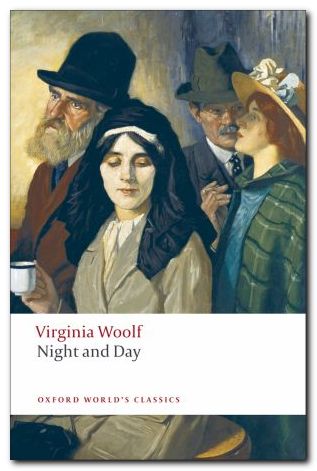
Oxford World Classics edition
Night and Day – characters
| Richard Alardyce | a great 19 century poet – Katharine’s grandfather |
| Mr Trevor Hilbery | editor of the Critical Review – Katharine’s father |
| Mrs Hilbery | Alardyce’s only child – Katharine’s mother |
| Katharine Hilbery | their only child (27) |
| Ralph Denham | a solicitor’s clerk (29) |
| Joan Denham | his elder sister (33) |
| Mary Datchet | a suffragist volunteer (25) |
| William Rodney | a government clerk and aesthete |
| Harry Sandys | a college friend of Denham |
| Mrs Celia Milvain | Katharine’s interfering aunt – Hilbery’s sister |
| Cyril Alardyce | lecturer at workmen’s college – Katharine’s cousin |
| Reverend Wyndham Datchet | Mary’s father – a rector |
| Elizabeth Datchet | Mary’s elder sister |
| Edward Datchet | an estate agent – Mary’s brother |
| Christopher Datchet | a law student |
| Henry Otway | Katharine’s favourite cousin in Lincolnshire |
| Lady Charlotte Otway | Katharine’s aunt |
| Cassandra Otway | Katharine’s attractive cousin (22) |
| Horace Basnett | a young radical social reformer |
Other works by Virginia Woolf
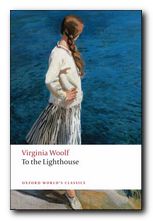 To the Lighthouse (1927) is the second of the twin jewels in the crown of her late experimental phase. It is concerned with the passage of time, the nature of human consciousness, and the process of artistic creativity. Woolf substitutes symbolism and poetic prose for any notion of plot, and the novel is composed as a tryptich of three almost static scenes – during the second of which the principal character Mrs Ramsay dies – literally within a parenthesis. The writing is lyrical and philosophical at the same time. Many critics see this as her greatest achievement, and Woolf herself realised that with this book she was taking the novel form into hitherto unknown territory.
To the Lighthouse (1927) is the second of the twin jewels in the crown of her late experimental phase. It is concerned with the passage of time, the nature of human consciousness, and the process of artistic creativity. Woolf substitutes symbolism and poetic prose for any notion of plot, and the novel is composed as a tryptich of three almost static scenes – during the second of which the principal character Mrs Ramsay dies – literally within a parenthesis. The writing is lyrical and philosophical at the same time. Many critics see this as her greatest achievement, and Woolf herself realised that with this book she was taking the novel form into hitherto unknown territory.
![]() Buy the book at Amazon UK
Buy the book at Amazon UK
![]() Buy the book at Amazon US
Buy the book at Amazon US
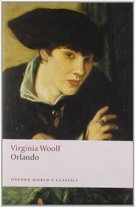 Orlando (1928) is one of her lesser-known novels, although it’s critical reputation has risen in recent years. It’s a delightful fantasy which features a character who changes sex part-way through the book – and lives from the sixteenth to the twentieth century. Using this device (which turns out to be strangely credible) Woolf explores issues of gender and identity as her hero-heroine moves through a variety of lives and personal adventures. Orlando starts out as an emissary to the Court of St James, lives through friendships with Swift and Alexander Pope, and ends up motoring through the west end of London on a shopping expedition in the 1920s. The character is loosely based on Vita Sackville-West, who at one time was Woolf’s lover. The novel itself was described by Nigel Nicolson (Sackville-West’s son) as ‘the longest and most charming love-letter in literature’.
Orlando (1928) is one of her lesser-known novels, although it’s critical reputation has risen in recent years. It’s a delightful fantasy which features a character who changes sex part-way through the book – and lives from the sixteenth to the twentieth century. Using this device (which turns out to be strangely credible) Woolf explores issues of gender and identity as her hero-heroine moves through a variety of lives and personal adventures. Orlando starts out as an emissary to the Court of St James, lives through friendships with Swift and Alexander Pope, and ends up motoring through the west end of London on a shopping expedition in the 1920s. The character is loosely based on Vita Sackville-West, who at one time was Woolf’s lover. The novel itself was described by Nigel Nicolson (Sackville-West’s son) as ‘the longest and most charming love-letter in literature’.
![]() Buy the book at Amazon UK
Buy the book at Amazon UK
![]() Buy the book at Amazon US
Buy the book at Amazon US
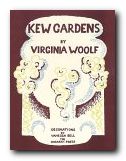 Kew Gardens is a collection of experimental short stories in which Woolf tested out ideas and techniques which she then later incorporated into her novels. After Chekhov, they represent the most important development in the modern short story as a literary form. Incident and narrative are replaced by evocations of mood, poetic imagery, philosophic reflection, and subtleties of composition and structure. The shortest piece, ‘Monday or Tuesday’, is a one-page wonder of compression. This collection is a cornerstone of literary modernism. No other writer – with the possible exception of Nadine Gordimer, has taken the short story as a literary genre as far as this.
Kew Gardens is a collection of experimental short stories in which Woolf tested out ideas and techniques which she then later incorporated into her novels. After Chekhov, they represent the most important development in the modern short story as a literary form. Incident and narrative are replaced by evocations of mood, poetic imagery, philosophic reflection, and subtleties of composition and structure. The shortest piece, ‘Monday or Tuesday’, is a one-page wonder of compression. This collection is a cornerstone of literary modernism. No other writer – with the possible exception of Nadine Gordimer, has taken the short story as a literary genre as far as this.
![]() Buy the book at Amazon UK
Buy the book at Amazon UK
![]() Buy the book at Amazon US
Buy the book at Amazon US
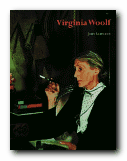 Virginia Woolf is a readable and well illustrated biography by John Lehmann, who at one point worked as her assistant and business partner at the Hogarth Press. It is described by the blurb as ‘A critical biography of Virginia Woolf containing illustrations that are a record of the Bloomsbury Group and the literary and artistic world that surrounded a writer who is immensely popular today’. This is an attractive and very accessible introduction to the subject which has been very popular with readers ever since it was first published..
Virginia Woolf is a readable and well illustrated biography by John Lehmann, who at one point worked as her assistant and business partner at the Hogarth Press. It is described by the blurb as ‘A critical biography of Virginia Woolf containing illustrations that are a record of the Bloomsbury Group and the literary and artistic world that surrounded a writer who is immensely popular today’. This is an attractive and very accessible introduction to the subject which has been very popular with readers ever since it was first published..
![]() Buy the book at Amazon UK
Buy the book at Amazon UK
![]() Buy the book at Amazon US
Buy the book at Amazon US
Virginia Woolf – web links
![]() Virginia Woolf at Mantex
Virginia Woolf at Mantex
Biographical notes, study guides to the major works, book reviews, studies of the short stories, bibliographies, web links, study resources.
![]() Blogging Woolf
Blogging Woolf
Book reviews, Bloomsbury related issues, links, study resources, news of conferences, exhibitions, and events, regularly updated.
![]() Virginia Woolf at Wikipedia
Virginia Woolf at Wikipedia
Full biography, social background, interpretation of her work, fiction and non-fiction publications, photograph albumns, list of biographies, and external web links
![]() Virginia Woolf at Gutenberg
Virginia Woolf at Gutenberg
Selected eTexts of the novels The Voyage Out, Night and Day, Jacob’s Room, and the collection of stories Monday or Tuesday in a variety of digital formats.
![]() Woolf Online
Woolf Online
An electronic edition and commentary on To the Lighthouse with notes on its composition, revisions, and printing – plus relevant extracts from the diaries, essays, and letters.
![]() Hyper-Concordance to Virginia Woolf
Hyper-Concordance to Virginia Woolf
Search texts of all the major novels and essays, word by word – locate quotations, references, and individual terms
![]() Virginia Woolf – a timeline in phtographs
Virginia Woolf – a timeline in phtographs
A collection of well and lesser-known photographs documenting Woolf’s life from early childhood, through youth, marriage, and fame – plus some first edition book jackets – to a soundtrack by Philip Glass. They capture her elegant appearance, the big hats, and her obsessive smoking. No captions or dates, but well worth watching.
![]() Women’s History Walk in Bloomsbury
Women’s History Walk in Bloomsbury
Tour of literary and political homes in Bloomsbury – including Gordon Square, Gower Street, Bedford Square, Tavistock Square, plus links to women’s history web sites.
![]() Virginia Woolf Society of Great Britain
Virginia Woolf Society of Great Britain
Bulletins of events, annual lectures, society publications, and extensive links to Woolf and Bloomsbury related web sites
![]() BBC Audio Essay – A Eulogy to Words
BBC Audio Essay – A Eulogy to Words
Charming sound recording of radio talk given by Virginia Woolf in 1937 – a podcast accompanied by a slideshow of photographs.
![]() A Family Photograph Albumn
A Family Photograph Albumn
Leslie Stephen compiled a photograph album and wrote an epistolary memoir, known as the “Mausoleum Book,” to mourn the death of his wife, Julia, in 1895 – an archive at Smith College – Massachusetts
![]() Virginia Woolf first editions
Virginia Woolf first editions
Hogarth Press book jacket covers of the first editions of Woolf’s novels, essays, and stories – largely designed by her sister, Vanessa Bell.
![]() Virginia Woolf – on video
Virginia Woolf – on video
Biographical studies and documentary videos with comments on Virginia Woolf and the Bloomsbury Group and the social background of their times.
![]() Virginia Woolf Miscellany
Virginia Woolf Miscellany
An archive of academic journal essays 2003—2014, featuring news items, book reviews, and full length studies.
© Roy Johnson 2015
More on Virginia Woolf
Virginia Woolf – web links
Virginia Woolf – greatest works
Virginia Woolf – criticism
More on the Bloomsbury Group
